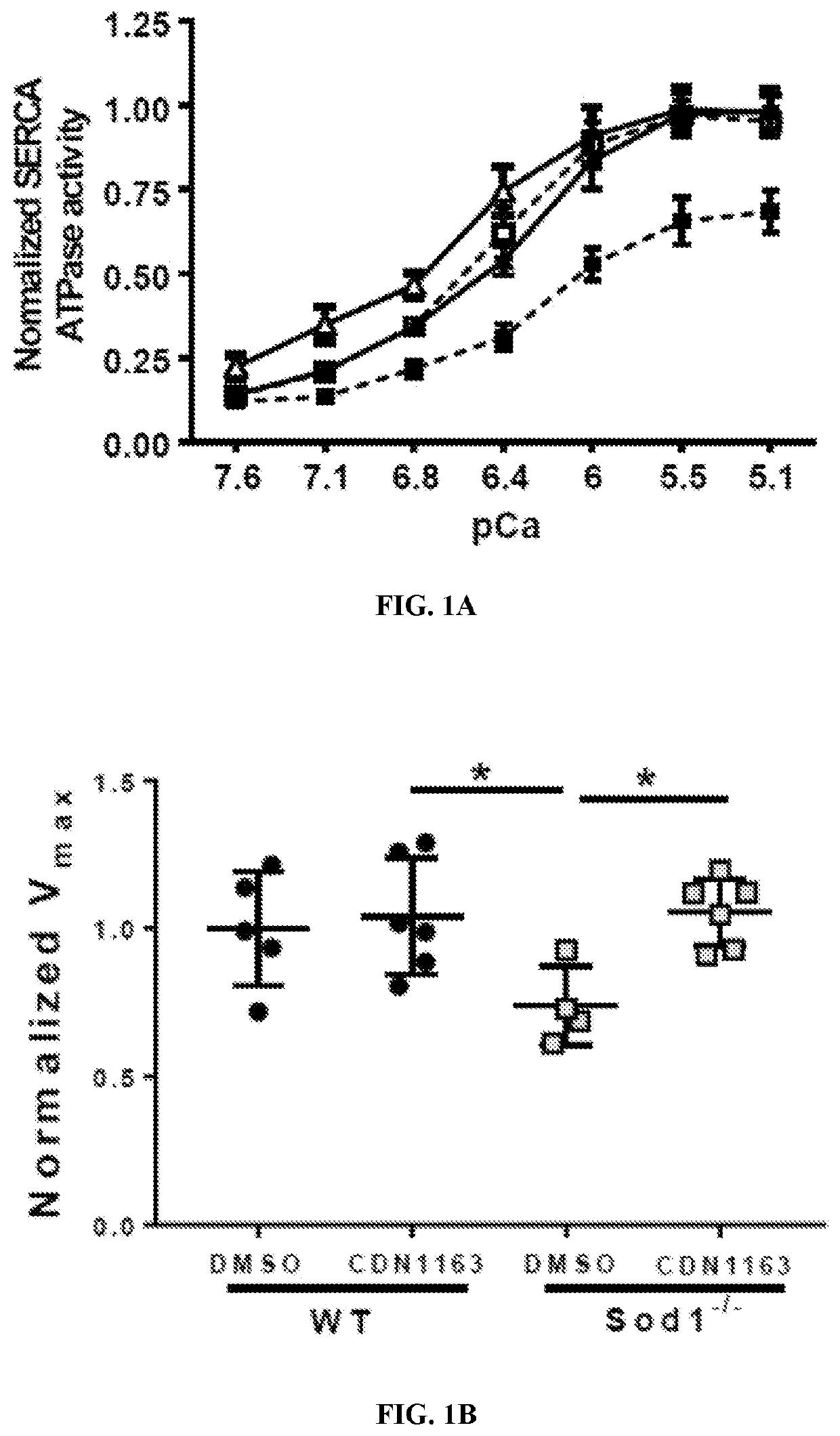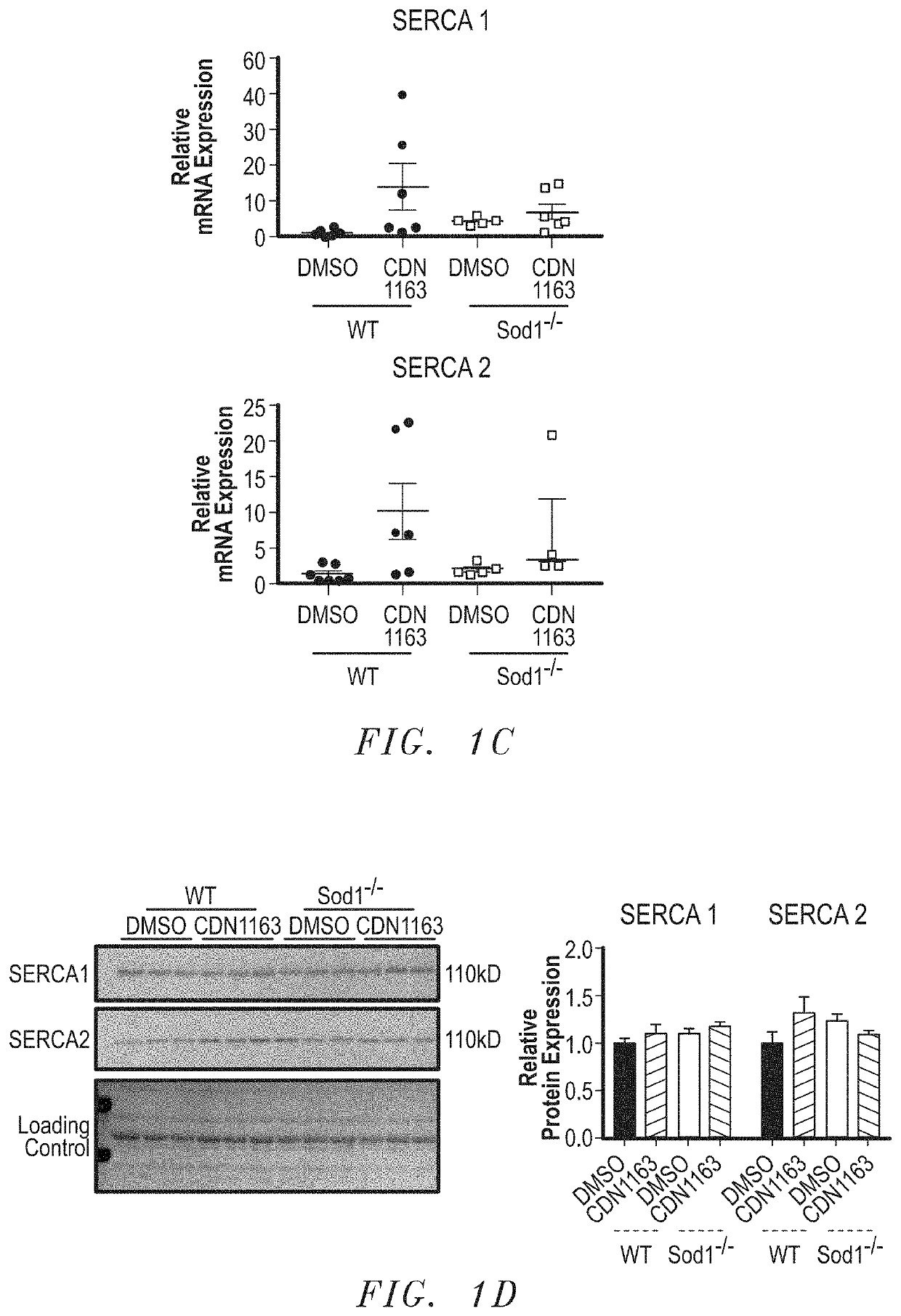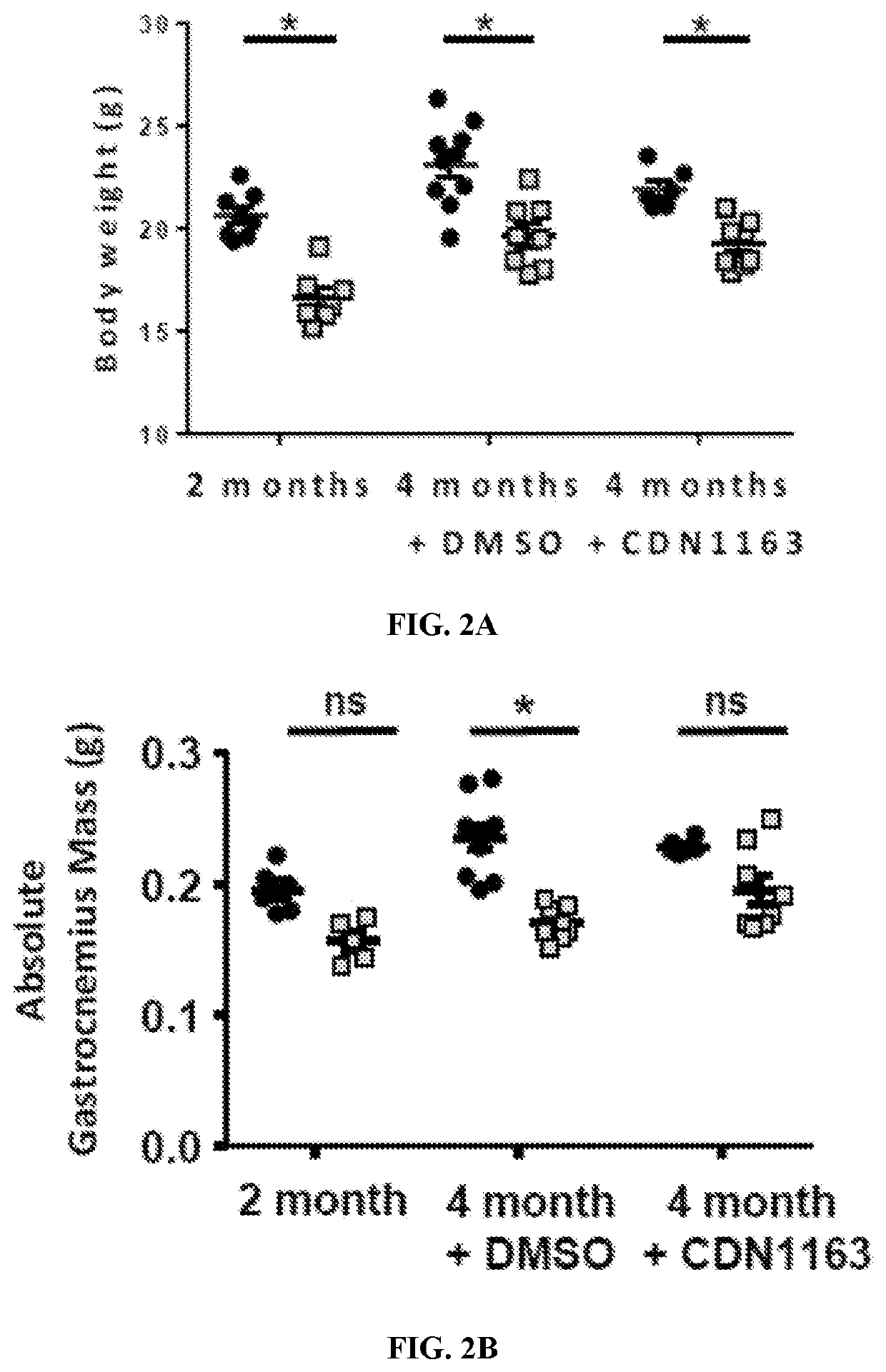Treatment for age- and oxidative stress-associated muscle atrophy and weakness
a technology of oxidative stress and muscle atrophy, applied in the field of muscle atrophy, can solve the problems of no effective pharmacological treatment to reduce, and achieve the effects of reducing muscle necrosis, improving mitochondrial morphology, and prolonging li
- Summary
- Abstract
- Description
- Claims
- Application Information
AI Technical Summary
Benefits of technology
Problems solved by technology
Method used
Image
Examples
example 1
[0069]CDN1163 rescues the SERCA activity in the Sod1− / − mice. Ca2+-dependent Ca2+-ATPase activity was measured in gastrocnemius muscle homogenates to determine the effects of CDN1163 on SERCA function. Maximum Ca2+ dependent (SR) Ca2+-ATPase is significantly reduced (≈33%; p− / − mice when compared to WT mice. The reduction in SERCA activity is completely restored with 7 weeks of CDN1163 treatment (FIGS. 1A, 1B). Levels of SERCA1 and SERCA2 mRNA and protein were not changed in Sod1− / − mice and were not altered by CDN1163 treatment (FIGS. 1C, 1D).
example 2
[0070]CDN1163 prevents gastrocnemius muscle atrophy in the Sod1− / − mice. At 2 months of age (the starting point for this study) the Sod1− / − mice have a significantly smaller body mass (˜19% less than age matched WT mice; 20.6±0.4 versus 16.6±0.4) as the inventors have previously reported (3, 7) (FIG. 2A). CDN1163 treatment for 7 weeks did not alter body weight in WT or Sod1− / − mice, and the Sod1− / − mice remained approximately 14% smaller than the WT mice at the end of the 7 week treatment period. At 2 months of age, neither absolute (FIG. 2B) nor normalized (FIG. 2C) gastrocnemius muscle mass is statistically lower in Sod1− / − versus WT female mice. However, at the end of the 7 week period (˜4 months of age) there is a significant decrease in both absolute and normalized gastrocnemius muscle mass in the untreated Sod1− / − mice compared to untreated WT mice (FIGS. 2B, 2C) consistent with the inventor's previous reports(3). Remarkably, 7 weeks of CDN1163 treatment completely prevented t...
example 5
[0072]CDN1163 attenuates mitochondrial dysfunction in the Sod1− / − mice. It is well documented that elevated levels of cytosolic Ca2+ lead to increased mitochondrial ROS production (16). The inventors have previously shown that the mitochondria from the Sod1− / − mice show structural and functional defects (4, 5). To test whether the activation of SERCA pump function improves mitochondrial function, the inventors measured mitochondrial ROS production as H2O2 emission using isolated mitochondria from the gastrocnemius muscle. In accordance with the inventor's previous findings, mitochondria from Sod1− / − mice showed significantly greater (≈340%, p2O2 production in State-1 respiration (mitochondria respiring without addition of external substrate), than mitochondria from gastrocnemius muscle from WT mice (FIG. 4A). In contrast, isolated mitochondria from CDN treated muscle from Sod1− / − mice do not show elevated levels of H2O2 production, i.e., levels are similar to mitochondria from WT mi...
PUM
| Property | Measurement | Unit |
|---|---|---|
| Stress optical coefficient | aaaaa | aaaaa |
Abstract
Description
Claims
Application Information
 Login to View More
Login to View More - R&D
- Intellectual Property
- Life Sciences
- Materials
- Tech Scout
- Unparalleled Data Quality
- Higher Quality Content
- 60% Fewer Hallucinations
Browse by: Latest US Patents, China's latest patents, Technical Efficacy Thesaurus, Application Domain, Technology Topic, Popular Technical Reports.
© 2025 PatSnap. All rights reserved.Legal|Privacy policy|Modern Slavery Act Transparency Statement|Sitemap|About US| Contact US: help@patsnap.com



